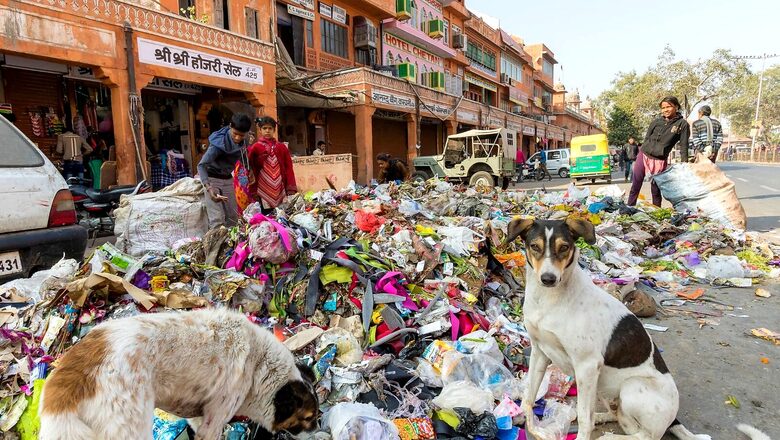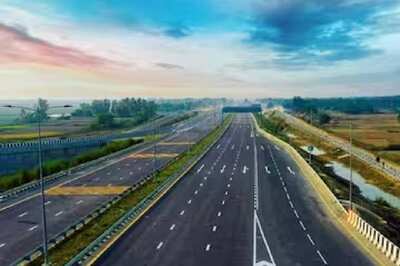
views
It’s there in your kitchen, in the bag you carry to your office, the consumer goods that fill your stores, the food you order online and the water bottle you buy from the nearest store — plastic is ubiquitous. Durable. Affordable. Convenient. Yet, perhaps the most toxic material which, once put in the system, takes thousands of years to degrade, and in most cases, does not degrade at all. Ever.
On July 1, India joins the global fight to phase out single-use plastic items — beginning with roughly 19 items which we use once and discard without a thought. The ban is not on plastic per se, but its use to meet a certain requirement which can easily be replaced by a sustainable alternative. Most of the items included in the list are those which do not get recycled, or collected by waste pickers, but keep on circulating in our ecosystem for years. These are items of low utility and high littering potential — a criterion finalised by the government to narrow down on plastic which can be phased out with minimal impact on livelihoods.
While industries and workers manufacturing and selling these items are at the forefront of this ban, the onus will hugely be on the users, who will eventually decide if it meets the desired success or not. With our cities and towns getting increasingly clogged with plastic waste which is killing animals every day, there is no doubt that it is not just a “litter issue” but a public health hazard that is leeching thousands of chemicals into our oceans, soil and food.
But unlike most countries, a direct ban on all single-use plastic items may have many unintended consequences. The most evident impact will be on the livelihood of some of the most vulnerable people — the informal sector and the waste pickers whose major income come from collecting plastic waste — at least 50% of which is Polyethylene Terephthalate (PET) plastic, shows a recent research by environmental NGO Chintan.
The Plastic Waste Management (Amendment) Rules, 2021, therefore identified just a few items like straws, stirrers, cutlery, candy sticks, wrapping films, ear buds, thermocol (Polystyrene) for decoration, to be prohibited this July.
So yes, it is indeed going to take more than just a ban to clear and clean our ecosystem from the disastrous consequences of plastic. Individual actions matter, and they matter more considering the staggering amount of plastic waste India generates every year. As per estimate, an average Indian uses 10 kg of plastic annually – only 60% of which is recycled.
People will have to come on board, and it can all begin with a simple ‘No’ – No to plastic bags, no to drinking water in plastic bottles, and perhaps, no to a little “more convenience” which comes at a huge cost.
Begin with something as simple as plastic straws. The Indian FMCG sector had been rallying hard to push the ban by a year because of the challenges being faced to procure the huge quantity of paper straws that could meet the burgeoning need of their consumers. The paper straws that you find with the beverages is mostly imported, because of unavailability of enough local capacity. To its defence, the industry takes the alibi of satisfying the demand of its consumers to convert plastic into products. So, why not eliminate the need for it by choosing to not ask for straws, or perhaps, if convenient carry your own.
The Act also prohibits the use of carry bags made of virgin or recycled plastic less than 75 microns as opposed to 50 microns and from December, it will be extended to polythene bags under 120 microns. Despite polythene bags being banned across several states, we still find it being widely used. Perhaps, we can do our part to ensure the current ban does not meet the same fate.
The industry may find hard to look for viable alternatives with the same ‘magic’ qualities of plastic, but those options are widely available for most of us in our homes. Replacing plastic bottles with glass, plastic bags with cloth/jute bags, plastic cutlery with steel and choosing to wrap our items with paper rolls instead of thin plastic films. The options are many. And it is perhaps a matter of choice for majority of the users with the means to buy these products.
The plastic may not seem like a direct crisis to many of us today. But if it continues at the same pace, the impacts will be far too many to ignore. The recent evidences emerging of how microplastics – the tiny plastic particles less than 5 mm in size — have now entered our bloodstreams is perhaps just one of them.
So as the ban comes into force on July 1, there will be an opportunity for each of us to act. And act now.
Read all the Latest News , Breaking News , watch Top Videos and Live TV here.


















Comments
0 comment